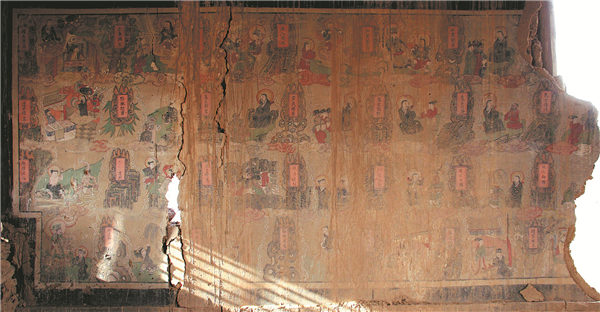Fortifying history, beyond bulwarks
By WANG QIAN | China Daily | Updated: 2024-03-30 09:07

Enduring legacy
Known for its historical sites, cultural heritage and customs, Yuxian was a military stronghold that hosted multiple walled-in villages along the Great Wall during the Ming Dynasty. Soldiers were stationed there to guard the region against nomads from the north and cultivated the land when there was no war.
Today, its surviving villages are popular scenic destinations for travelers to learn about the culture of "Chinese castles", and the temples, theaters and old residences that surround them. With traditional eaves and elegant wood, stone and brick carvings, the imposing buildings and courtyards present some of the best samples of Chinese aesthetics.
It stands as a testament to thousands of years of civilization, blending agricultural, nomadic and military cultures, into a unique and enduring folk legacy.
These led to Cheng's "predestined connection" with Yuxian, after he first visited the county in 2007 and watched a show of the 500-year-old performance art dashuhua, which literally translates as "creating tree flowers". Scrap iron is melted to 1,600 C and thrown against a cold wall to create blinding blasts of sparks.
Cheng was an enthusiastic backpacker and began to regularly visit Yuxian. Although he has a busy work schedule as a chemical engineer, he has traveled to visit the county at least once a year, and even once a month during some periods.
He has visited the county 74 times, covering more than 50,000 kilometers and exploring every village nestled within its river valleys and mountain gorges.
"At first, we didn't have map or navigation app. We looked for stone forts to locate these ancient villages, which led us to encounter unexpected history," Cheng says.
As they repeatedly visited these forts and surrounding villages, Cheng came to realize that the county hosts much more than initially meets the eye. Even in newly developed villages or remote mountainous areas, there were unexpected discoveries, such as murals hidden in recently constructed temples.
To further explore the history of these rural settlements and their architectural treasures, Cheng's team has interviewed elderly residents, mostly men older than 60, who likely know more about the local traditions and their respective community's past.
Despite the challenge of understanding the local dialect, Cheng alone has filled more than 30 notebooks recording these conversations.
























